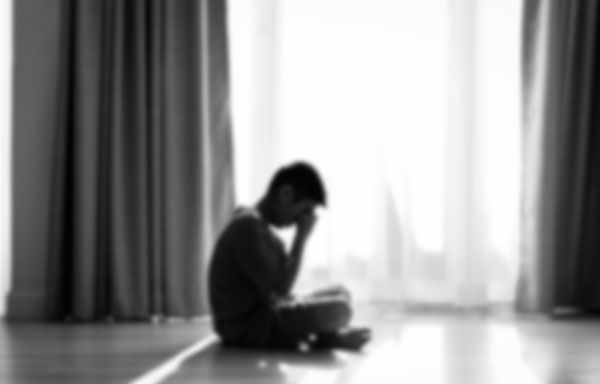Finding compassion for our anxiety creature (and tips to support children with theirs)

By Dr Samantha Weld-Blundell
Founder: The Little Psychology Company
BSc. (Hons) MSc. DECPsy. CPsychol
Humans are unlike other mammals. We don’t have clear defences against physical danger: we are not ferocious, or ridiculously fast with big claws or sharp teeth. What we do have though, is a big brain that worries. We worry about feeling worried and we get anxious at the thought of feeling anxious. Believe it or not, this is a coping strategy developed to keep us safe. It gives us the strength, adrenaline and speed to run away - or fight! It's a helpful tool that can get us through things that are deemed threatening.
At some point in our lives, we will experience anxiety - some individuals more than others. Sadly, society deems that we should stop feeling this way and we need to get rid of our anxiety, which is totally an unrealistic expectation. We can't free ourselves of anxiety because it’s part of being a human being.
Anxiety is a very complex emotional state so the best description I have found, which is also child friendly, is to describe it as a sensitive little creature that travels along with us trying desperately to keep us from harm’s way. Anxiety creatures can be very misunderstood as they are stuck in a bit of a time warp, and they have not quite caught up with the modern-day world. Today’s threats are no longer sabre tooth tigers and fires in caves but are play dates, dentist appointments and exams. So, even though our little anxiety creature can be overwhelmingly debilitating at times, it is there to help us, and we need to learn to live with it rather than fight it.
Rather than treating anxiety like the villain we should show it a little bit of compassion and allow our anxiety creature to become the ‘imperfect hero’. Anxiety creatures are not something that we need to fear, they are something that we need to recognise, understand, and learn to manage. It’s all about learning to feel comfortable in the uncomfortable and knowing, even with these anxious feelings, we can still move forward. Our imperfect hero is perfectly able to adapt.
Here are 5 simple tips on how we can support our children to manage their anxiety creature:
Grounding Activity – 5 Senses
Ask the child to find:
- 5 things they can see
- 4 things they can physically feel
- 3 things they can hear
- 2 things they can smell
- 1 thing they can taste
Starfish breathing exercise
The adult can sit adjacent to the child and help model the exercise:
- Hold your hand up with your fingers wide
- With the index finger on the opposite hand trace up the side of your thumb, breathing in deeply, and as you trace your thumb down the other side, breathe all your air out
- Continue to repeat this all the way till you reach the outside of your little finger
Reduce Unknowns
One of the common causes of anxiety in children are unknowns. Try and reduce the number of unknowns in a day:
- Provide verbal preparation through verbal prompts e.g., “15 minutes then we will be getting in the bath, 10….5….1” using simple language
- Provide a timetable, visual where necessary, to help communicate the activities in the day
- Use ‘Now’ and ‘Next’ language (sometimes supported with a visual) e.g., “Now we are going to Sainsbury’s, next we are visiting Nana.”
- Chunk activities, like homework, by using a timer, so the child knows there is an end to the task. Follow this by a break/activity of their choice and then back to another small amount of time on homework
- Establish and stick to a routine (as much as possible), this can help the flow of the day and the consistency and repetition of this routine can be a comfort to children as they know what to expect and when
Structured games
Structured game rules can provide an area for safe engagement. Concrete, mechanical and rhythmic activities (counting, sorting, colouring, building) engage the left-hand side of the brain and soothe highly charged states, e.g., highly anxious children. These activities can be good to use at the start of a school day or after a transition from lunchtime. It may help the child’s readiness for learning.
Be a Lighthouse
Project a sense of security and safety for which the child can leave to explore the world and return to:
-
- Be available and attentive
- Watch, listen, use open body language and warm facial expressions
- Be interested, be curious, ask questions, and ensure your interest is authentic
- Bookend the day - check in with them at the start and end of the day
Reference
BOOK: Your anxiety beast and you (Goodman, E., 2020)
Find out more about Dr Samantha Weld-Blundell: